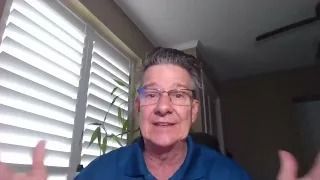Call (727) 784-5555
If a couple decides to dissolve their marriage, something that is often described as a “third character” in the proceedings is the couples’ home.
Finding a way to divide a home can be financially and emotionally fraught. And it often takes on more significance than other items due to the home typically being a couple’s most valuable asset — and because of the complex emotions often intertwined with it.
This is according to reporting at The New York Times, which discussed the mechanism of splitting a home with 88 different people who have experienced it.
“For some, holding onto the property became a point of pride — proof that they could make it on their own,” the story states. “For others, shedding the space where a life fell apart felt like a metamorphosis.
“Sometimes, the house became the center of a protracted dispute, a cudgel to exact revenge. Some blamed the house itself — maybe one that was too expensive or needed too much work — for the collapse of a fragile union.”
Among a series of profiled people who shared the stories of dividing their home in a divorce, one was 69-year-old Ryder Sollmann Wyatt, who engaged in what is often referred to as a “gray divorce.”
In 2020, long after she and her family moved into an 18th-century farmhouse that had been purchased by her grandfather some 80 years earlier, her husband suggested selling the estate to dissolve shared assets.
“But Ms. Wyatt, who, as a child, had lived in a cottage on the property with her parents until she was 12, could not imagine a world without the family farm,” the story read.
Eventually, her husband let her keep the house and collected half of the remaining marital assets. This kept the dispute out of court and highlights the emotional weight that can come from a longer marriage.
Gray divorce has become increasingly common over the past 30 years. According to 2017 data compiled by the Pew Research Center, the rates of gray divorce have doubled since 1990. The reverse mortgage industry has taken notice, seeing seniors engaging in divorce as a potential path for business.
When asked about divorce as a potential vehicle for reverse mortgage business in 2019, Christina Harmes Hika — now of Amerifund Home Loans — described how it could be useful in dividing up different assets.
“I have helped clients structure their reverse mortgage as part of the divorce settlement so one can stay in the home and the other can get off of the existing mortgage and move on with their share of equity,” Harmes Hika said in 2019.
“Many times, it’s one spouse that is looking into a reverse so they can stay in the house and give their departing spouse their share of the equity, and they already have a figure they need to get as part of the settlement.”
Have A Question?
Use the form below and we will give your our expert answers!
Reverse Mortgage Ask A Question
We will get back to you as soon as possible.
Please try again later.
Start Your Loan
with DDA todayYour local Mortgage Broker
Mortgage Broker Largo See our Reviews
Looking for more details? Listen to our extended podcast!
Check out our other helpful videos to learn more about credit and residential mortgages.





